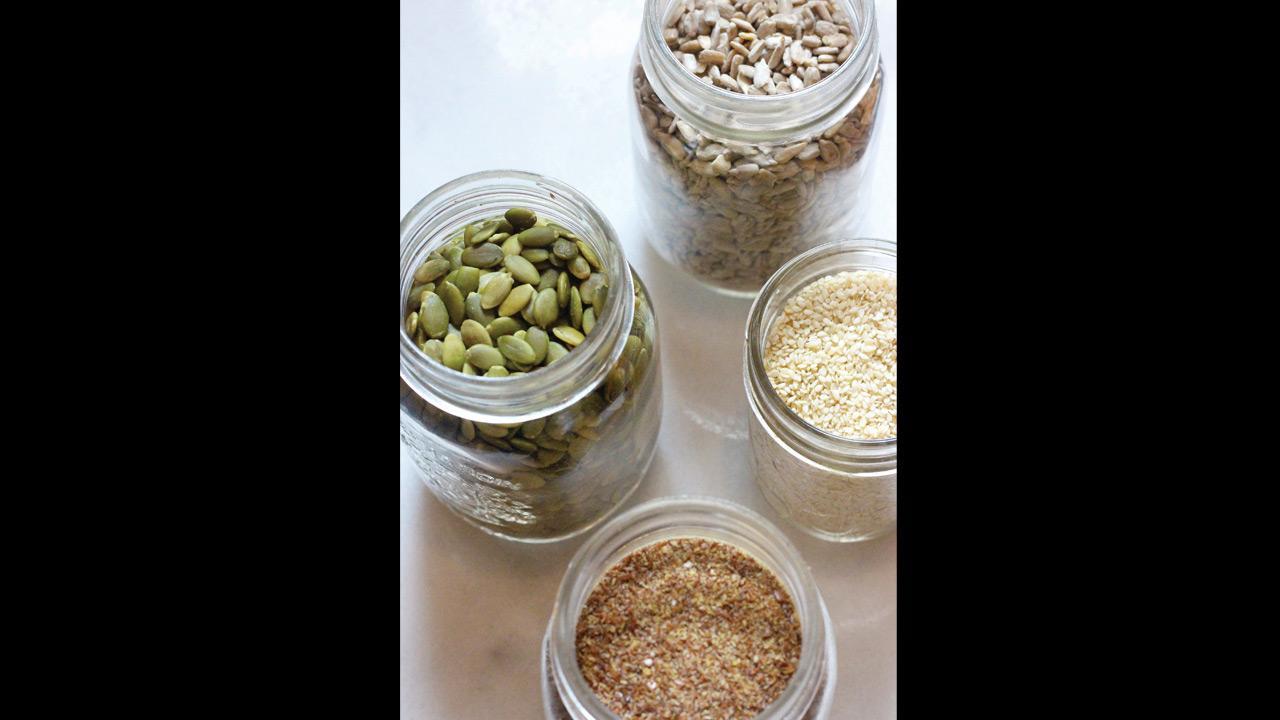Seed cycling is a naturopathic approach to balancing hormones and promoting better menstrual health. Experts share the details

The practice involves rotating flax, sesame, pumpkin and sunflower seeds. Representation Pic
Many wellness gurus on social media have been advocating a practice known as seed cycling. It is believed to regulate your hormones to ensure more regular periods, improve fertility and alleviate menopausal symptoms such as hot flashes and vaginal dryness. “Although there isn’t much scientific research available about this technique, in my practice, I have seen many cases where seed cycling has brought tangible improvements, when combined with lifestyle and dietary changes,” shares Luke Coutinho, a holistic lifestyle coach.
ADVERTISEMENT
The technique is based on rotating the consumption of four seeds (one tablespoon per day), namely flaxseeds, sesame seeds, pumpkin seeds and sunflower seeds in accordance with your menstrual cycle. “The seeds are divided into two groups. Flaxseeds and pumpkin seeds must be consumed during the follicular phase, while sunflower seeds and sesame seeds can be ground and eaten during the luteal phase,” explains Payal Kothari, an integrative nutritionist. The first day of your period cycle is the start of the follicular phase, which continues until day 14, when ovulation occurs. During this phase, the hormone oestrogen prepares your body for ovulation. Lower oestrogen levels inhibit ovulation, while elevated levels aggravate premenstrual symptoms (PMS). The phytoestrogens present in flaxseeds help to regulate oestrogen levels in your body. That’s because of their phytoestrogen content, or plant compounds that mimic the oestrogen hormone in the human body. Pumpkin seeds provide zinc to balance out the progesterone, which preps your body for the next phase of the menstrual cycle, she adds.
Payal Kothari
On the 15th day, your body has completed ovulation and progressed to the luteal phase. Here, you need more progesterone, and your oestrogen levels decline. Progesterone prepares your body for pregnancy by building your uterine lining. If pregnancy doesn’t occur, the progesterone levels in your body decrease and the uterine lining sheds, leading to bleeding — this marks the first day of your period, Kothari explains. “Sesame lowers your oestrogen levels due to the presence of a polyphenol known as lignans. Lignans convert to enterolactone in your body, which binds to oestrogen receptors thus halting excess oestrogen production. Vitamin E, which is present in sunflower seeds, also boosts progesterone and eases menstrual cramp pain,” Coutinho clarifies.
To maximise efficacy, health experts advise that you consume these seeds raw. Grinding them can help to increase the bioavailability of the nutrients they contain. Further, soaking the seeds before consumption helps to eliminate anti-nutritional factors such as phytic acid and tannins, they conclude.
 Subscribe today by clicking the link and stay updated with the latest news!" Click here!
Subscribe today by clicking the link and stay updated with the latest news!" Click here!






